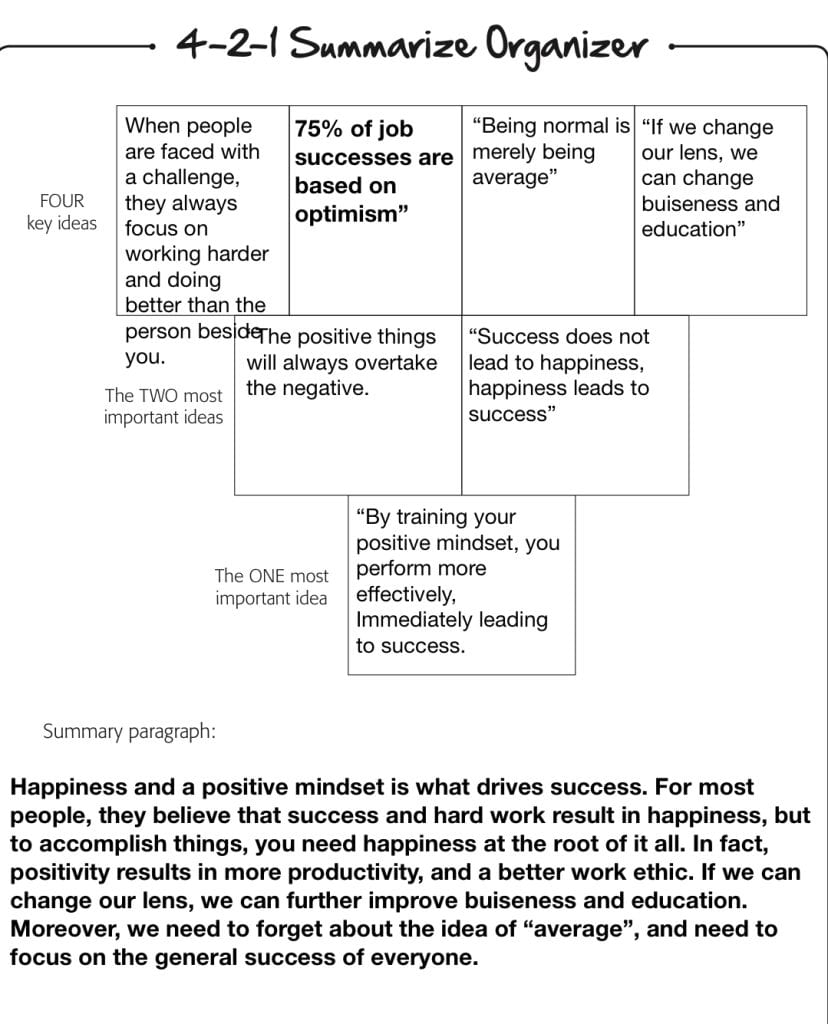Hello readers, and welcome back to the blog. Today’s post is about the recent project we’ve been working on in PGP 10 at Seycove. This project was all about “positive brain training” and reading the book “atomic habits” by James clear. The driving question was: “How does balance within my life create opportunities”. With effective habits that have a clear process, we are able to create opportunities. As mentioned in the book, if you keep improving and refining, the results will be remarkable. If you continue to use Habit 7: sharpen the saw, you will keep getting better at your craft.
To start it off, we explored “positive brain training”. There are 5 ways to do this: Meditation, conscious act of kindness, excersise, journaling, and gratitude. For each day, we would practice one of the 5 traits, and we would record in our “craft daily notes”. I found this to be really effective, as we were able to reflect and mention what we could improve next time.
We listened to a TED talk by Shawn Achor called “the happiness advantage”. This talk was all about seeing the positives in things, and that positivity=productivity. We did a “4-2-1” activity, where you take the 4 main ideas, then you keep breaking it down until you reach one summary sentence. Here’s what my 4-2-1 looked like:
 We also took a look back at the “seven habits”, a topic which we explored last year. In groups, we were each assigned a habit book, and at the end we did a 1 sentence summary on how our story relates to the habit. This was an opportunity to “jog our memories” on what the habits were and what they can be used for. It was important to re-learn these, as the seven habits directly relate to “atomic habits”.
We also took a look back at the “seven habits”, a topic which we explored last year. In groups, we were each assigned a habit book, and at the end we did a 1 sentence summary on how our story relates to the habit. This was an opportunity to “jog our memories” on what the habits were and what they can be used for. It was important to re-learn these, as the seven habits directly relate to “atomic habits”.
Our next step in this project was to begin our Atomic Habits reading. But first, we had to create an effective reading schedule. My plan was to read 15 minutes a day, and to be done the book by the end of spring break. For my schedule I used things:

I found my schedule to be very effective, as the reminder would pop up every day, which made it easier to complete and stay true to my plan.
As I began to read, I noticed the level of detail with personal anecdotes that related to habits and creating systems. He talked about his baseball career, and how he came back from that brutal injury. I liked that use of examples, cause it brought upon a more personal side. He also mentioned the idea that small habits can make a big difference. Usually, we try to do things in big steps, instead of sticking to the process. Focus on getting 1 percent better every day.
Next, he introduced the “habit laws”, which were for making good habits, and breaking bad ones. The 1st law, make it a obvious, the 2nd law, make it attractive, the 3rd law, make it easy, and the 4th law, make it satisfying. And for breaking bad habits, it’s the inverse.
Another point that I found interesting, was that we can always revise and improve our habits and systems. Sometimes, I find myself thinking “this is good enough”, or “I can’t make it any better”. But in reality, there’s always room for improvement and refinement.
To summarize, I found this project to be very useful and beneficial to my goals. Through the positive brain training, I was able to find more balance and cover multiple aspects of my life. And with the schedule and task management of my reading, I became more organized and I got better at working with Things. As for the reading, I connected to the author through his in depth anecdotes and examples.
Thanks for reading!